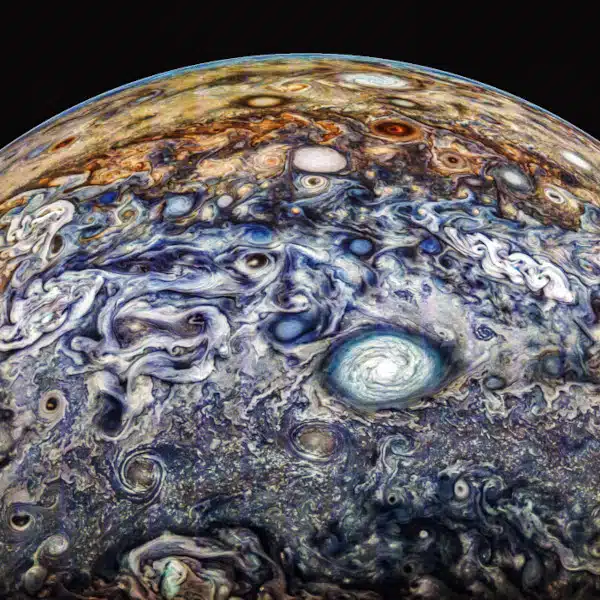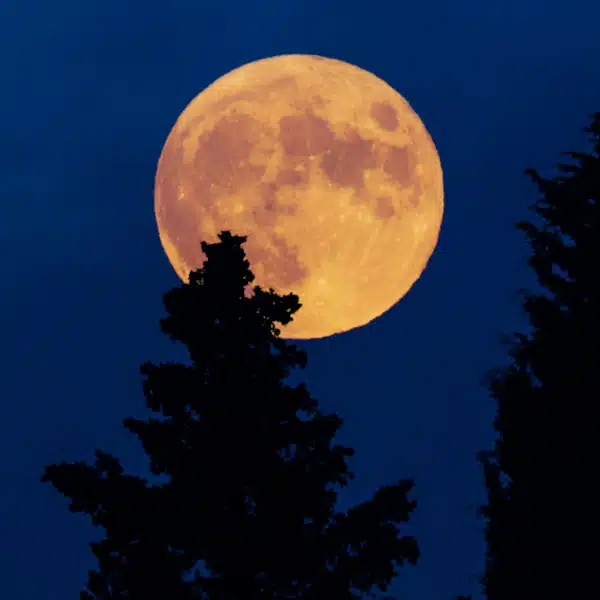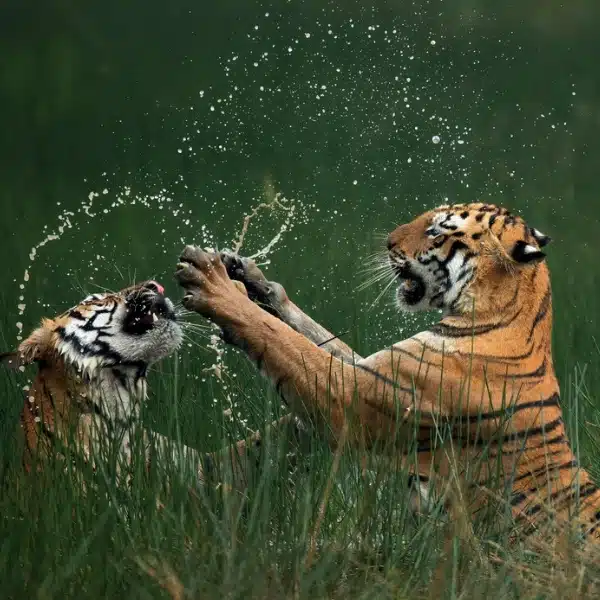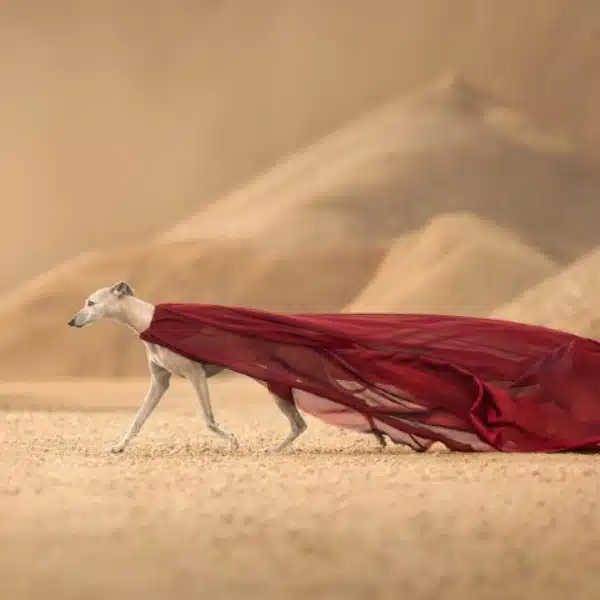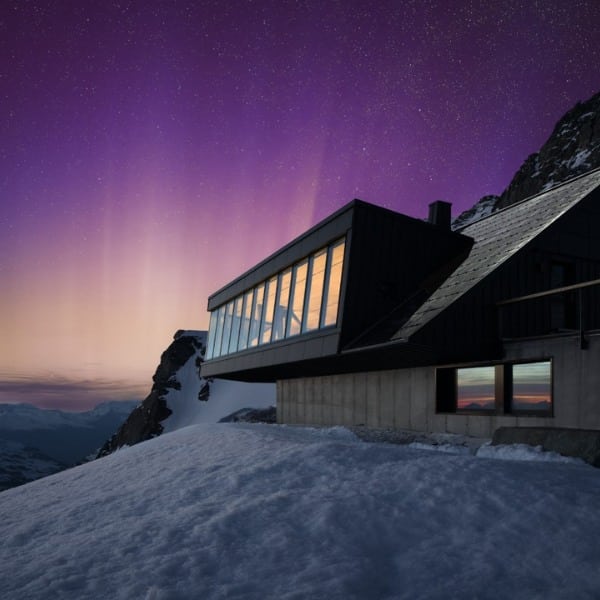
“Statue of Liberty Nebula” by Martin Pugh (Australia). Shortlist, Stars & Nebulae.
“Photographed using narrowband filters to accentuate the energy levels occurring in each emission line, sulfur was mapped to red, hydrogen to green and oxygen to blue. An additional 4 hours per RGB channel were acquired and substituted into the image, particularly for the stars. While aptly titled the Statue of Liberty Nebula (NGC 3576), the irony is that this is a southern hemisphere object. At lower left in the image is NGC 3603 containing the Starburst Cluster. NGC 3576 is located in the Carina arm of the Milky Way at approximately 20,000 light-years distant.”
Moved by the beauty of the stars, astrophotographers from around the world submitted their best work to the annual Insight Investment Astronomy Photographer of the Year contest. Run by Royal Observatory Greenwich each year, the competition is the place to view the artistry found in our sky. Thousands of photographs were submitted across 11 categories and, now, the 2020 shortlist has been revealed.
Now in its 12th year, the contest attracted photographers from 70 different countries who collectively entered over 5,200 images. The high quality of the shortlist means that the judges will have their hands full this year. From vibrant photos of the Northern Lights to faraway nebulae to incredible photos of our Sun, the list shows the wide spectrum of astrophotography.
“Astronomy is one of the most accessible sciences and everyone has looked up at the night sky at one time or another and wondered what is out there in the cosmos,” says competition judge and Royal Observatory Greenwich Astronomer, Dr. Emily Drabek-Maunder. “Astrophotography bridges the gap between art and science, highlighting the natural beauty of our Universe. The goal of the Insight Investment Astronomy Photographer of the Year competition is to use these powerful photographs of space to engage the public with the big questions science is trying to answer, from the inner workings of a galaxy to how our Solar System came to be.”
This year's contest also features two special awards. The Annie Maunder Prize for Image Innovation celebrates photos created using publicly available images. Entrants have been asked to process and manipulate the raw data to create something of their own. The other new award is the Sir Patrick Moore Prize for Best Newcomer. This prize goes to people who have just started their journey into astrophotography during the last year and consider it a hobby. And to prove that one doesn't need to have fancy equipment to take a good photo, special consideration will be given to those who use an inexpensive starter kit.
The winners of the Insight Investment Astronomy Photographer of the Year contest will be announced on September 10, 2020. The overall winner will receive £10,000 (about $12,529) and category winners will take home £1,500 (approx. $1,880). All winners and shortlisted entries will be featured in a special exhibition at the National Maritime Museum starting in October 2020.
Here are some highlights of the 2020 Astronomy Photographer of the Year shortlist.
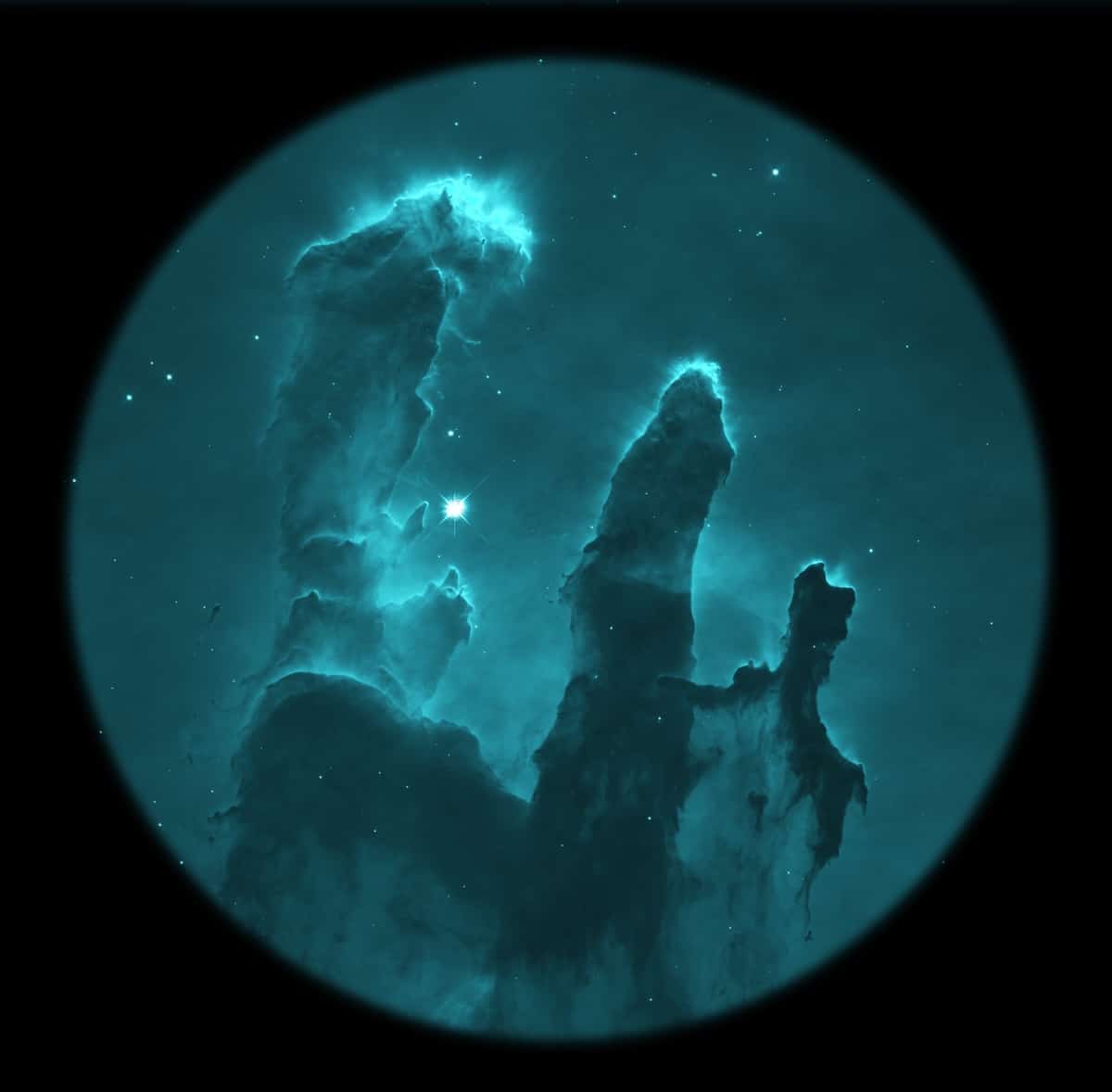
“M16” by Alexios Theodorov (Russia). Shortlist, Annie Maunder Prize for Image Innovation.
“This entry tries to catch the feel of stargazing through basic optical instrument—a kind of Galileo's telescope. Special processing of the image includes converting to Lab, channel mixing, increasing contrast, and applying filters, with the aim of illustrating that images with limited color range may be as stunning as full-color ones.”
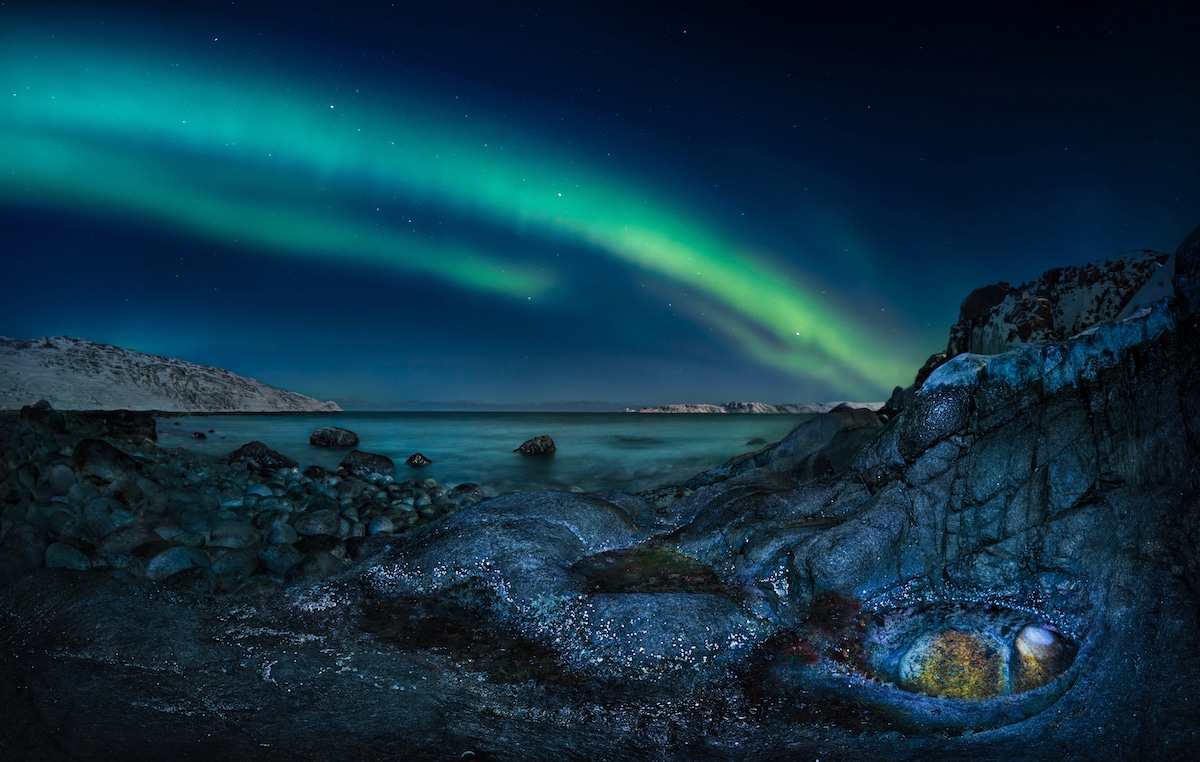
“Northern Dragon's Eye” by Elena Pakhalyuk (Ukraine). Shortlist, Aurorae.
“The photographer loves to travel, especially exploring the north and chasing the Northern Lights. Trying to capture how ordinary things can take magical forms under the lights, the photographer selected and lit this rocky outcrop and waited for the aurora to work its magic.”
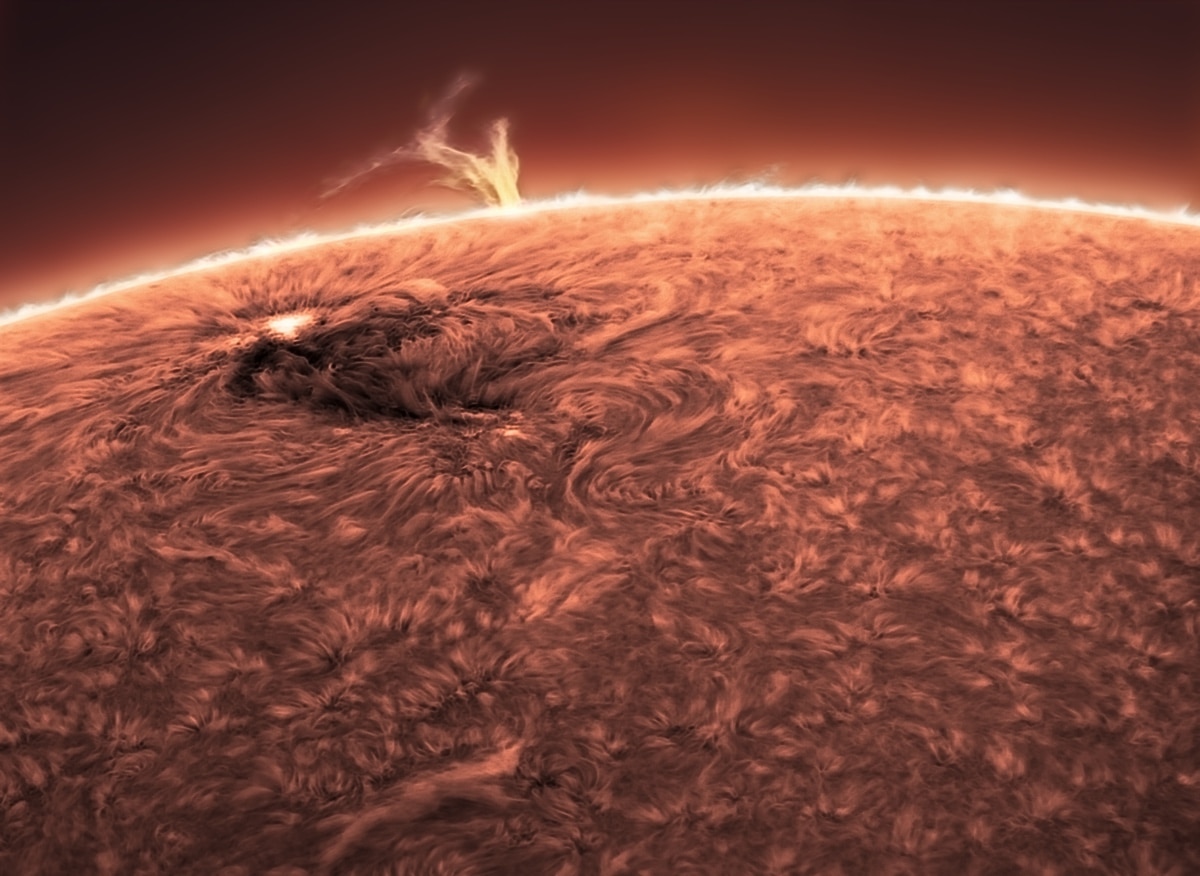
“Eruption….” by Elena Pakhalyuk (Ukraine). Shortlist, Our Sun.
“The photographer was inspired to imagine what the Crimean peninsula would look like in the distant past, when thousands of volcanoes erupted on Earth. She used lighting and long exposure to illustrate this. The resulting image sees everything combined into one large panorama image and processed in a photo editor.”
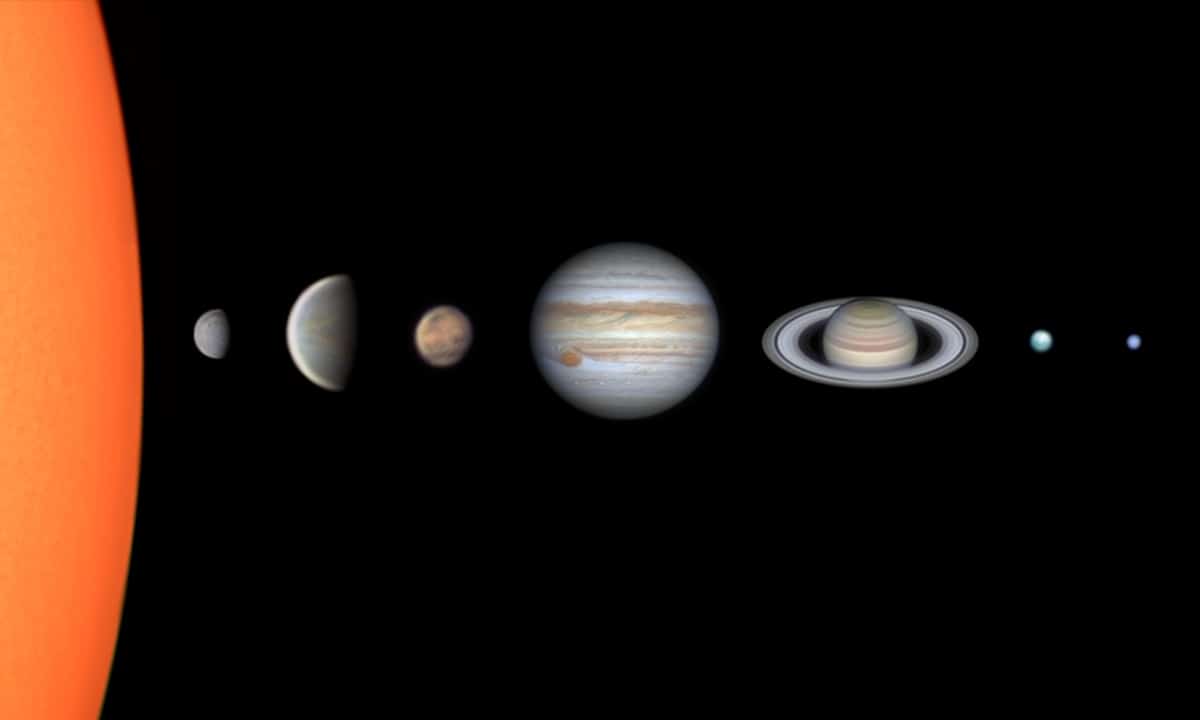
“Solar System Through my Telescope” by Vinicius Martins (Brazil). Shortlist, Best Newcomer.
“This image is a composition that the photographer made using their best images of the solar system. The individual images were taken between July 2019 and February 2020. All images were obtained using the same planetary imaging method and combined.”

“The Red Lake of Stars” by Bryony Richards (USA). Shortlist, Skyscapes.
“Years ago, before over-fishing, Little Redfish Lake was called as such due to the vast numbers of salmon turning the lake a red color. The red coloration is no longer seen because of salmon, but the color of sunsets and airglow during the night still turn the waters a vibrant red. It is these beautiful warm echoes of red, combined with the mirror-like reflections of the Sawtooth Mountains in the distance and the alignment of the Milky Way with the mountains that make Little Redfish Lake one of the most spectacular places the photographer has ever shot at night. The photographer recalls that ‘we were fortunate enough that night to have the lakeshore to ourselves, just three of us, and a rather excited dog who tried his best not to run into our tripods! We spent the sunset here, waiting for the stars to come out and the Milky Way core to rise, marveling at the red color of the water.'”
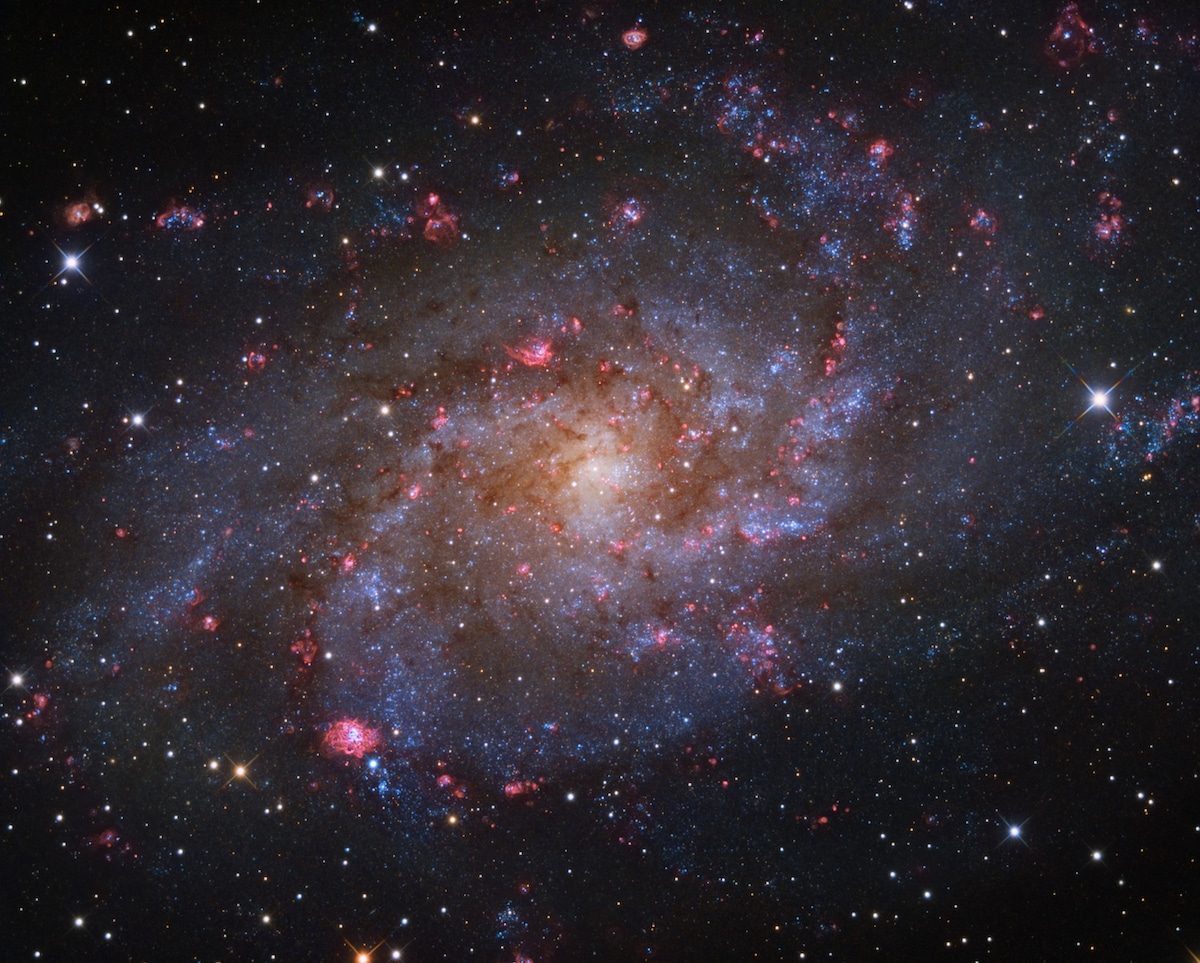
“M33: The Triangulum Galaxy” by Rui Liao (China). Shortlist, Galaxies.
“This sharp image shows off M33's blue star clusters and pinkish star forming regions along the galaxy's loosely wound spiral arms. In order to depict these star-forming regions, the photographer has taken a total of 26.5 hours of exposure time. For the photographer, the enjoyment comes in gazing at the ‘red flowers’ in the image, mingled in blue star clusters, and the satisfaction that his efforts paid off.”

“Kynance Cove under the Milky Way” by Louise Jones (UK). Shortlist, Best Newcomer.
“This image is only the photographer’s second attempt at shooting the Milky Way. It shows our galaxy over Kynance Cove in Cornwall, a beautiful spot with dark skis. It was taken on a cold, but fabulous night under the stars. As it was July, the sky was very blue, with full darkness only for about an hour. The foreground was taken at dusk and the sky is a stack of 4 images of 25 seconds taken later when the Milky Way appeared, the sky and foreground blended together in post-processing.”
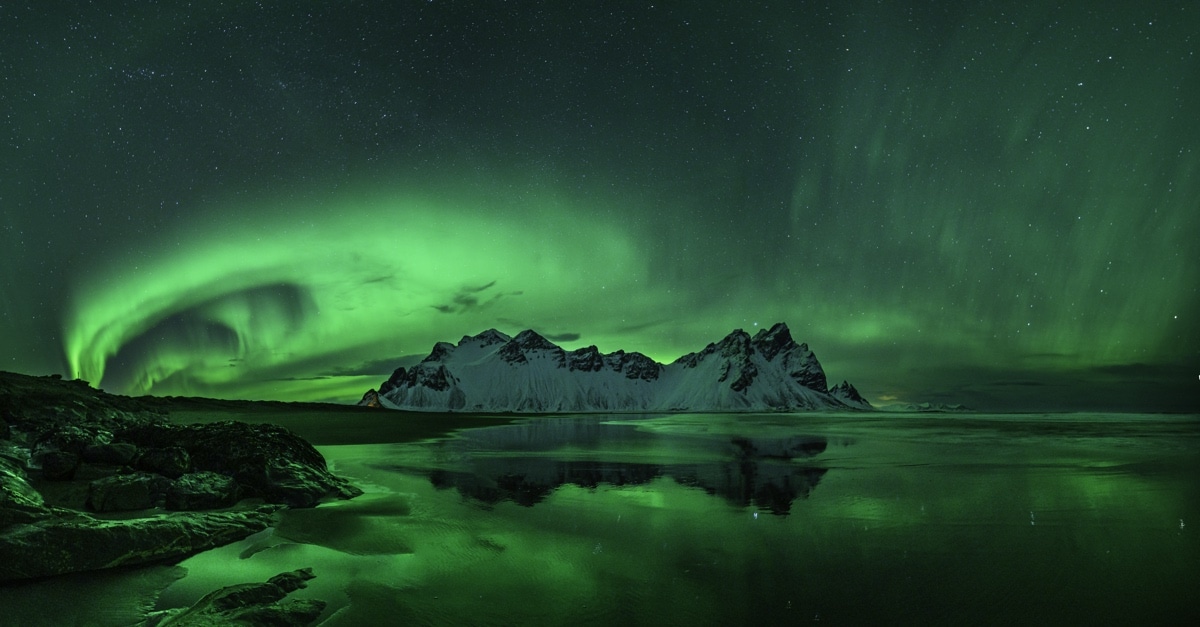
“Stokksnes Aurora” by Ben Bush (UK). Shortlist, Aurorae.
“This image captures the stunning Stokksnes looking to the Vestrahorn and the most powerful and beautiful night of aurora the photographer had ever seen. He traveled 1250 miles to try and capture his dream. In order to get the shot, the photographer ended up knee-deep in the North Atlantic in -6 degrees Celsius. The challenge was to capture the reflections in the water, on the black sand beach, and also not to over-expose the aurora. The photographer describes this as a truly awe-inspiring experience and one he feels blessed to have witnessed and captured on camera.”
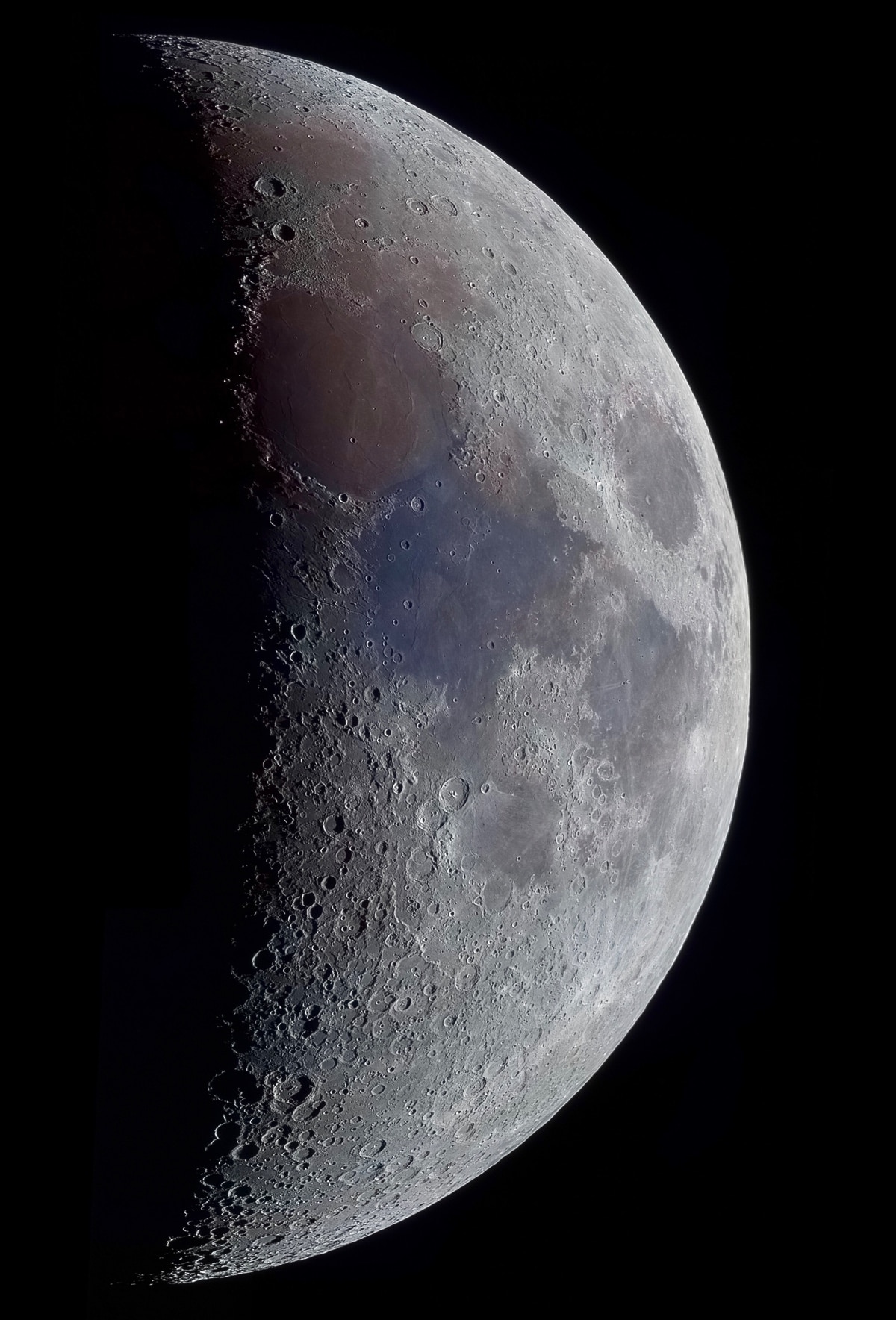
“39% Crescent Moon” by Richard Addis (UK). Shortlist, Our Moon.
“This image of the Moon at 39% illumination was captured through eleven videos of different areas, which were stacked and then stitched together. The saturation process revealed the mineral compositions in the Lunar Basalts on the surface. These vivid browns and blues are due to high concentrations of titanium and iron. The photographer loves the contrast along the terminator and the close-up detail and clarity of this image.”

“Beautiful Persian Gulf Nights” by Mohammad Sadegh Hayati (Iran). Shortlist, People & Space.
“On one of the many hiking trails along the coastline, the photographer discovered this incredible lookout. The scale of the vista encouraged the photographer to capture a 360-degree panoramic image of the entire sky using 60 15-second exposures. The movement of the clouds meant that the photographer had a short time to capture the Milky Way. The photographer is pictured, enjoying the wonderland he stumbled across.”
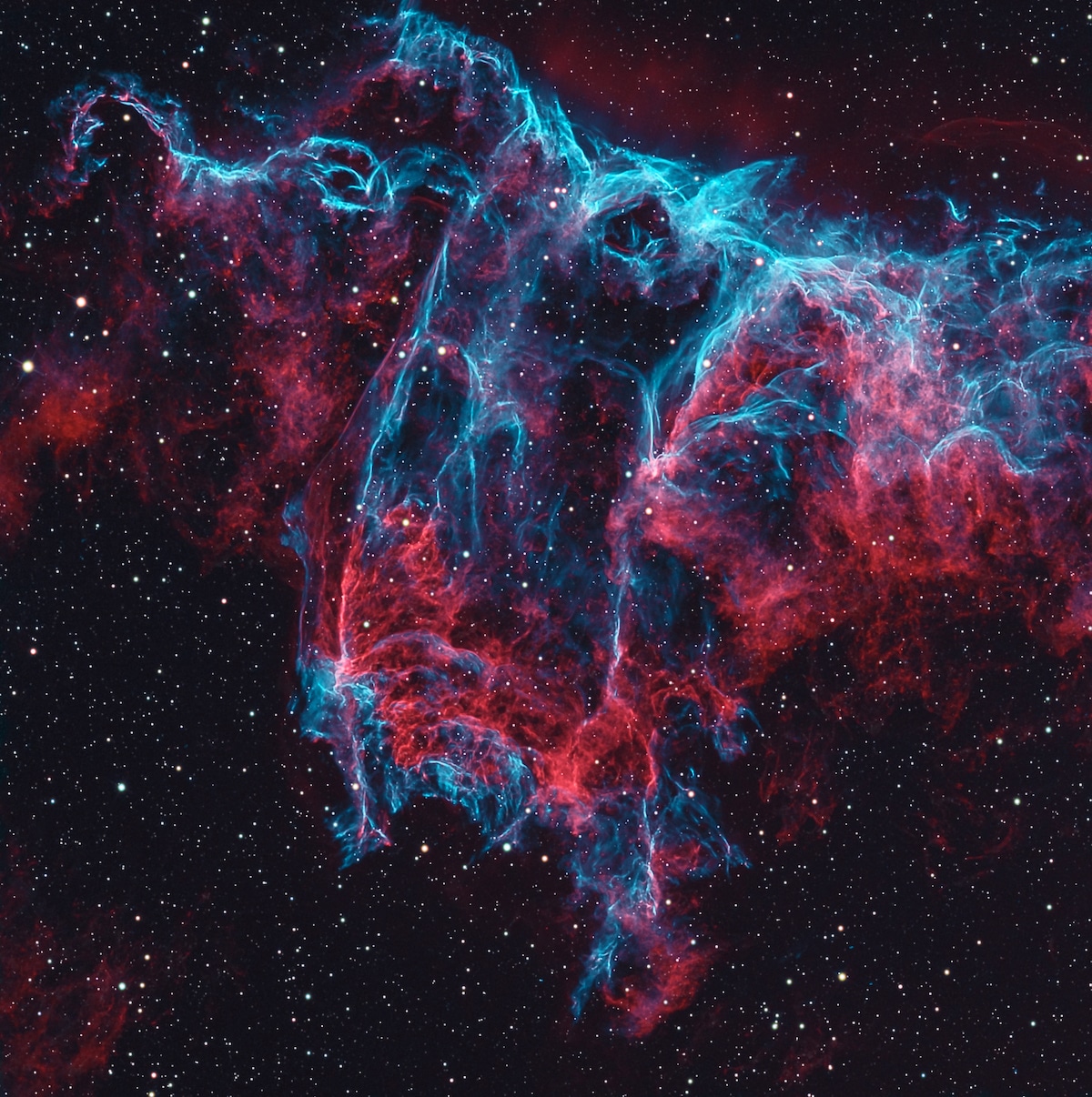
“The Bat Nebula” by Josep Drudis (USA). Shortlist, Stars & Nebulae.
“When a massive star explodes as a supernova it expels enormous amounts of materials, leaving behind one of the most beautiful examples of nebulae. This is the origin of the Veil Nebula, a large gas cloud in the constellation Cygnus, the Swan. This image shows just a small fragment of this nebula. The beauty and fine detail of the interlaced wisps of oxygen, nitrogen, and hydrogen, here mapped to their natural colors, is awe-inspiring. In this image, we can admire one of the life-building processes in the Universe.”
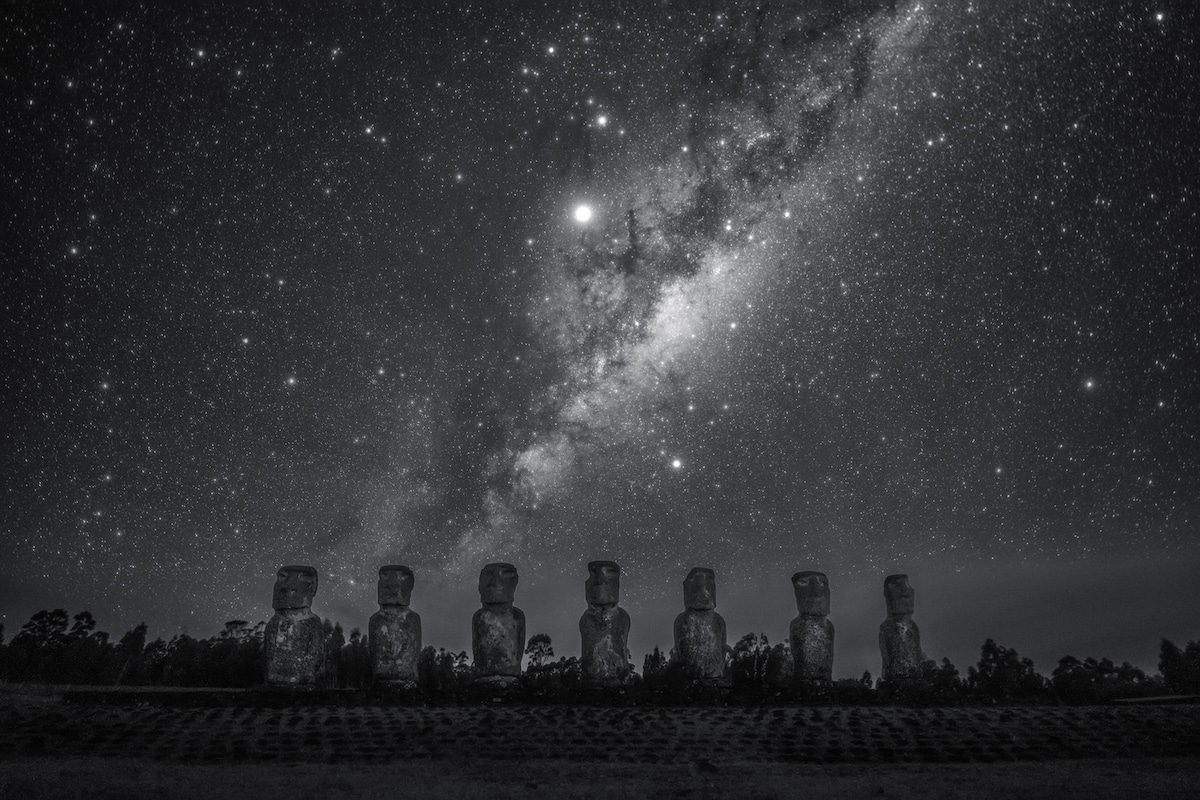
“Stargazing Giant” by Dai Jianfeng (China). Shortlist, People & Space.
“This image is the view of the Milky Way rising above the Moai at Ahu Akivi. Ahu Akivi is a particularly sacred place in Easter Island in the Valparaíso Region of Chile, looking out towards the South Pacific Ocean. The site has seven moai, all of equal shape and size, and is also known as a celestial observatory that was set up around the 16th century. The shot highlights the central bulge of the Milky Way, the constellation Scorpio, as well as the planets Jupiter and Saturn.”
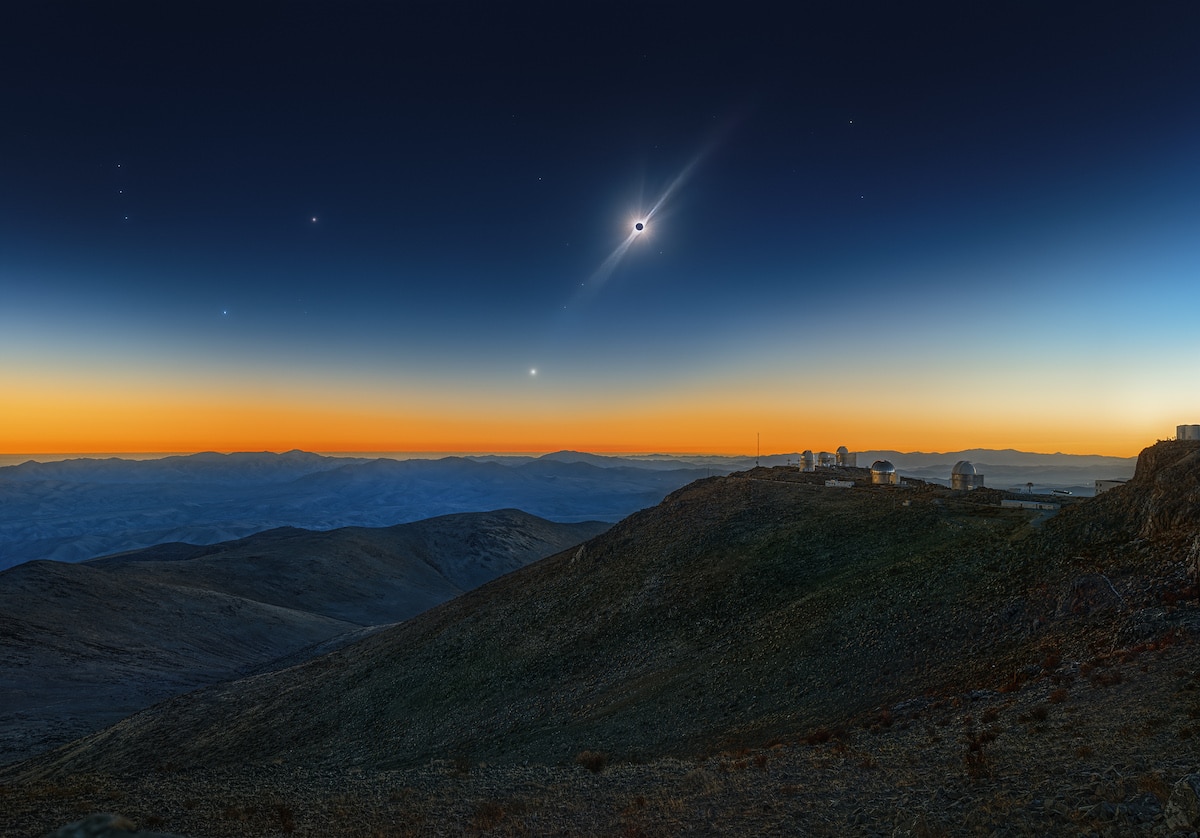
“Total Solar Eclipse, Venus and the Red Giant Betelgeuse” by Sebastian Voltmer (Germany). Shortlist, Our Sun.
“The 50th Anniversary of ESO's La Silla Observatory culminated with a breath-taking and very clear Total Solar Eclipse. In a very long process, the photographer calibrated, aligned, and stacked 96 frames together, revealing the streamers and the faint corona. Stars also became visible, especially the red giant Betelgeuse (left) which started dimming in the months after. For the different star brightnesses of the tiny star dots the photographer used his action set RealStars; so he was able to show the brightness of Betelgeuse in comparison to Bellatrix and the other stars during daytime.”
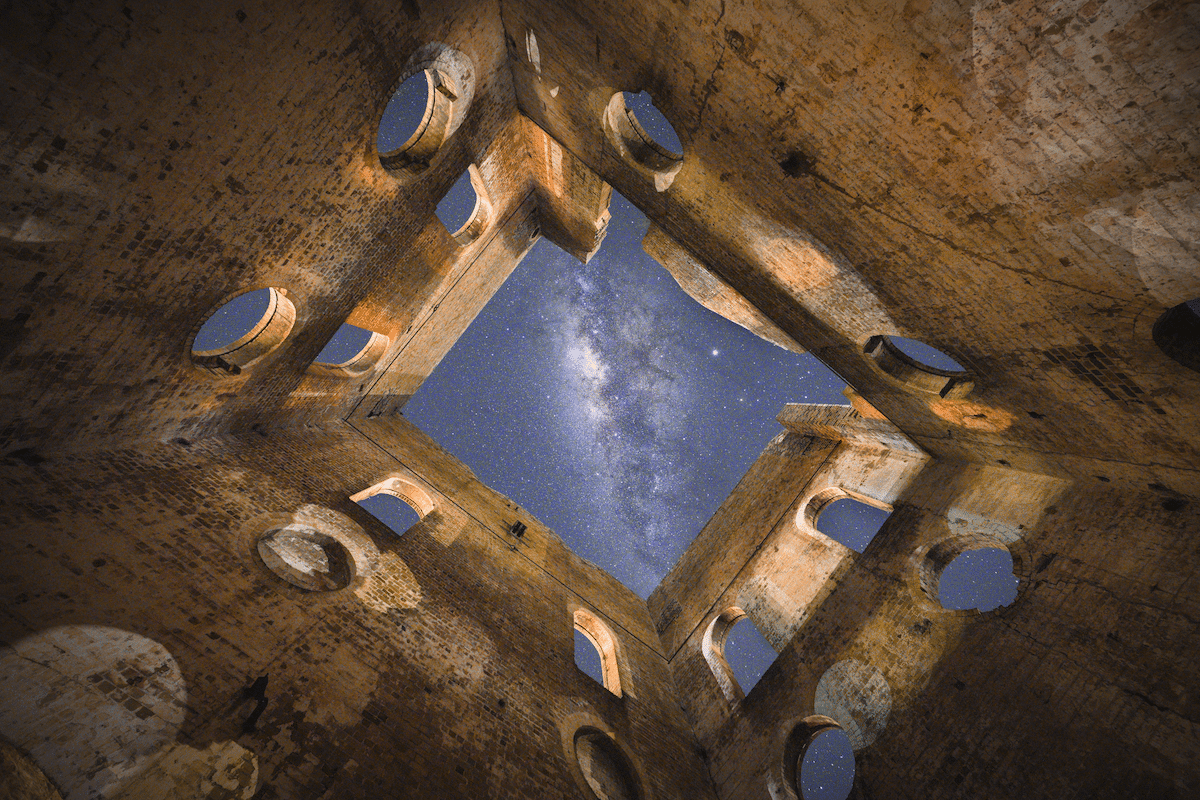
“Something Old, Something New” by Jay Evans (Austraila). Shortlist, Skyscape.
“The incredible site of the old Lithgow Blast Furnace has been restored as a heritage icon in the area reflecting on the past history of the beginnings of the iron and steel industries in Australia. With some prior planning, visiting at night provides the mesmerizing opportunity to capture the Galactic Core in the Milky Way as it passes overhead. The photographer took this opportunity to try out the first Astro shots captured using a new high megapixel camera, yet to be released.”
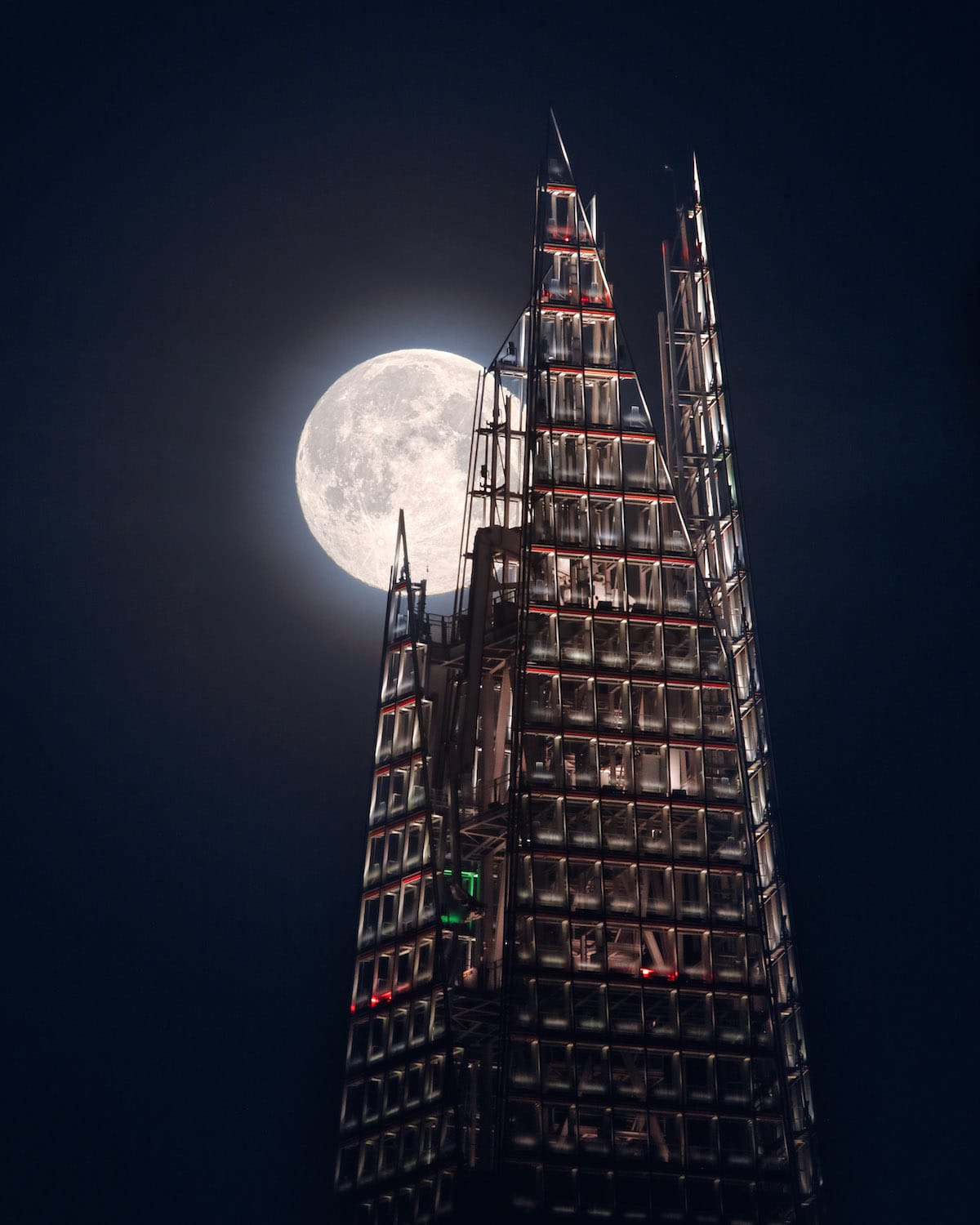
“The Moon and the Shard” by Mathew Browne (UK). Shortlist, Our Moon.
“After three failed attempts, the photographer finally got to shoot an image of London's iconic Shard skyscraper with a full moon behind it. The moon races through frame meaning the photographer only had a few minutes to capture the shot.”
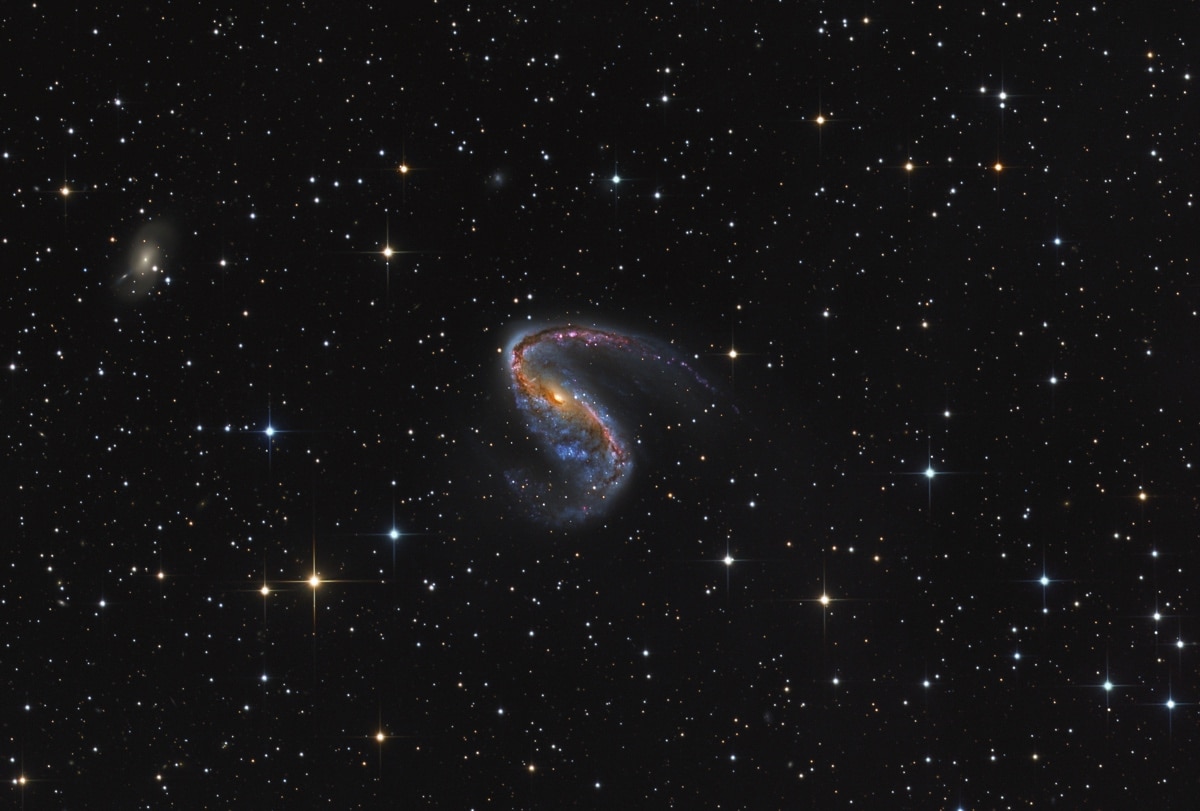
“NGC 2442 in Volans” by Martin Pugh (Australia). Shortlist, Galaxies.
“The photographer was particularly excited to capture this image, having relocated his CDK17 to Chile in May 2019. He found that the acquired data was of spectacular quality and given the seemingly endless clear nights at that location, he was able to accumulate a great deal in a relatively short period of time. The photographer captured 3 hours of hydrogen and it was enough to accentuate the star birth regions occurring in the galaxy.”











































































